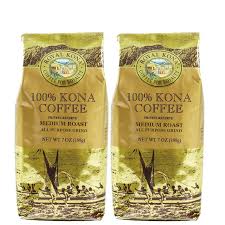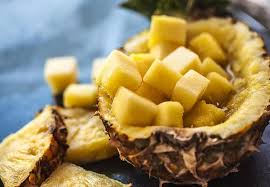Savoring the Richness of Hawaiian Coffees: A Taste of the Islands

The Rich and Flavorful World of Hawaiian Coffees
When it comes to coffee, Hawaii is known for producing some of the most sought-after and flavorful beans in the world. The unique climate and volcanic soil of the islands create ideal conditions for cultivating high-quality coffee that is cherished by coffee connoisseurs worldwide.
Hawaiian coffees are renowned for their smooth, rich flavor profiles that often exhibit hints of tropical fruit, chocolate, and nutty undertones. Each Hawaiian island has its own distinct coffee-growing regions, with Kona coffee from the Big Island being one of the most famous varieties.
Kona coffee is prized for its exceptional quality and smooth taste. Grown on the slopes of Mauna Loa, Kona coffee beans are hand-picked and sun-dried to perfection, resulting in a well-balanced cup with a medium body and bright acidity.
Maui also boasts its own unique coffee culture, with beans grown in the upcountry regions of the island. Maui coffees are known for their sweet and floral notes, making them a delightful choice for those seeking a more nuanced flavor profile.
On Oahu, you can find coffee farms nestled in the lush valleys of the island. Oahu coffees tend to be bold and full-bodied, with a rich aroma that reflects the island’s diverse landscape.
Whether you prefer a light roast with fruity undertones or a dark roast with chocolatey notes, Hawaiian coffees offer something for every palate. With their unparalleled quality and distinct flavors, Hawaiian coffees continue to captivate coffee enthusiasts around the globe.
Top 5 FAQs About Hawaiian Coffees: Popular Varieties, Brands, and Pricing
- What is the most popular coffee in Hawaii?
- Is there Hawaiian coffee?
- What brand of coffee is grown in Hawaii?
- Why is 100 Kona coffee so expensive?
- What coffee do Hawaiians drink?
What is the most popular coffee in Hawaii?
The most popular coffee in Hawaii is undoubtedly Kona coffee. Grown on the fertile slopes of the Big Island’s Mauna Loa volcano, Kona coffee is celebrated for its exceptional quality and unique flavor profile. With its smooth taste, medium body, and bright acidity, Kona coffee has earned a reputation as one of the finest coffees in the world. Its popularity among coffee aficionados stems from the meticulous care taken in cultivating and processing the beans, resulting in a truly exquisite cup of coffee that captures the essence of Hawaii’s rich volcanic soil and tropical climate.
Is there Hawaiian coffee?
Yes, Hawaiian coffee does exist! Hawaii is renowned for producing high-quality coffee beans that are grown in the unique climate and volcanic soil of the islands. One of the most famous varieties is Kona coffee, which is grown on the slopes of Mauna Loa on the Big Island. With its smooth taste and exceptional quality, Hawaiian coffees have earned a reputation for their rich flavor profiles that often feature hints of tropical fruit, chocolate, and nutty undertones. Whether you’re a coffee connoisseur or simply enjoy a good cup of joe, exploring the world of Hawaiian coffees is sure to delight your taste buds.
What brand of coffee is grown in Hawaii?
Hawaii is renowned for producing a variety of high-quality coffee brands, with Kona coffee being one of the most famous and sought-after varieties. Grown on the slopes of Mauna Loa on the Big Island, Kona coffee is known for its exceptional flavor and quality. Other notable Hawaiian coffee brands include MauiGrown Coffee from Maui and Waialua Estate Coffee from Oahu, each offering unique flavor profiles that showcase the diverse terroir of the Hawaiian islands. Whether you’re a coffee aficionado or simply looking to savor a taste of Hawaii, exploring the different brands of Hawaiian coffee is sure to delight your senses.
Why is 100 Kona coffee so expensive?
One of the reasons why 100% Kona coffee is so expensive is due to its limited production and high demand. Kona coffee is grown in a specific region on the Big Island of Hawaii, where the combination of volcanic soil, ideal climate, and elevation create optimal conditions for cultivating premium coffee beans. The meticulous care and hand-picking process involved in harvesting Kona coffee also contribute to its higher price point. Additionally, the strict regulations that govern the labeling of Kona coffee ensure its authenticity and quality, further adding to its value in the market.
What coffee do Hawaiians drink?
Hawaiians take great pride in their locally grown coffee, with Kona coffee being one of the most popular choices among residents and visitors alike. Known for its smooth flavor and medium body, Kona coffee is often enjoyed by Hawaiians as a daily indulgence. However, the coffee preferences of Hawaiians can vary depending on personal taste and regional influences, with other Hawaiian-grown varieties such as Maui and Oahu coffees also finding favor among coffee enthusiasts on the islands. Whether sipped black or enjoyed as a specialty drink, Hawaiian coffees offer a diverse range of flavors to suit every coffee lover’s palate.
